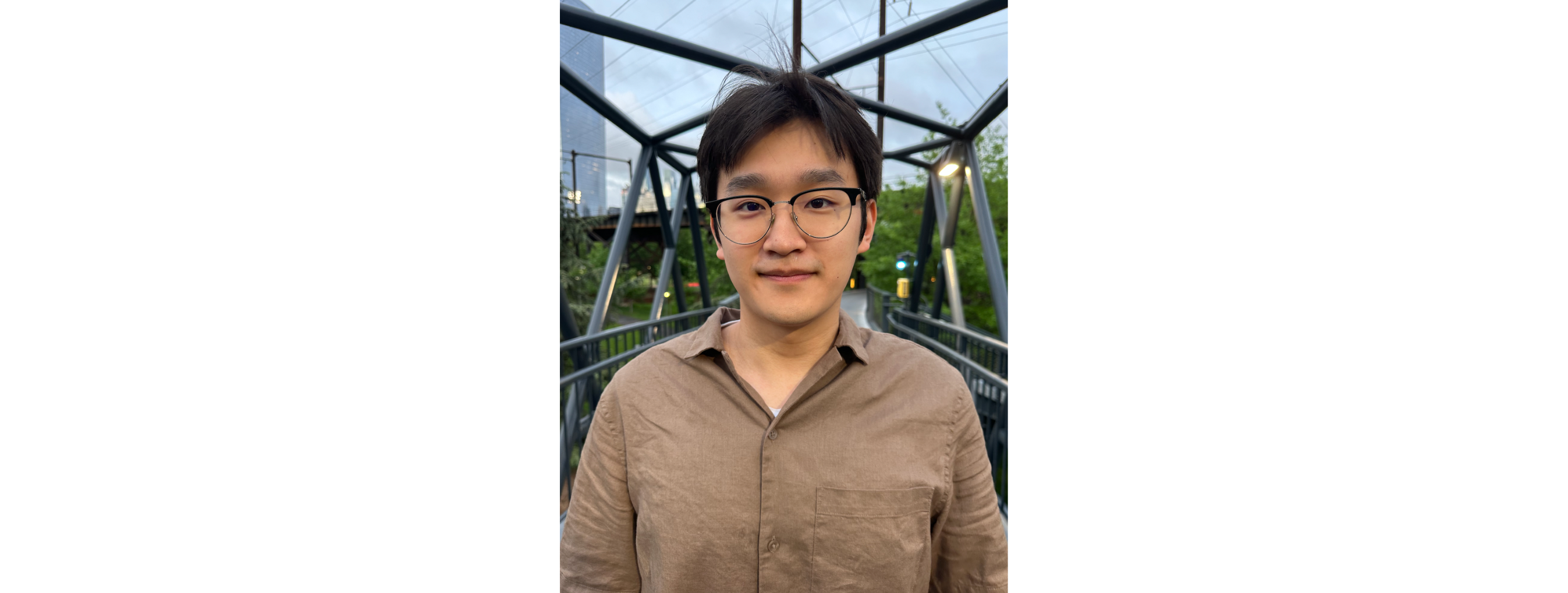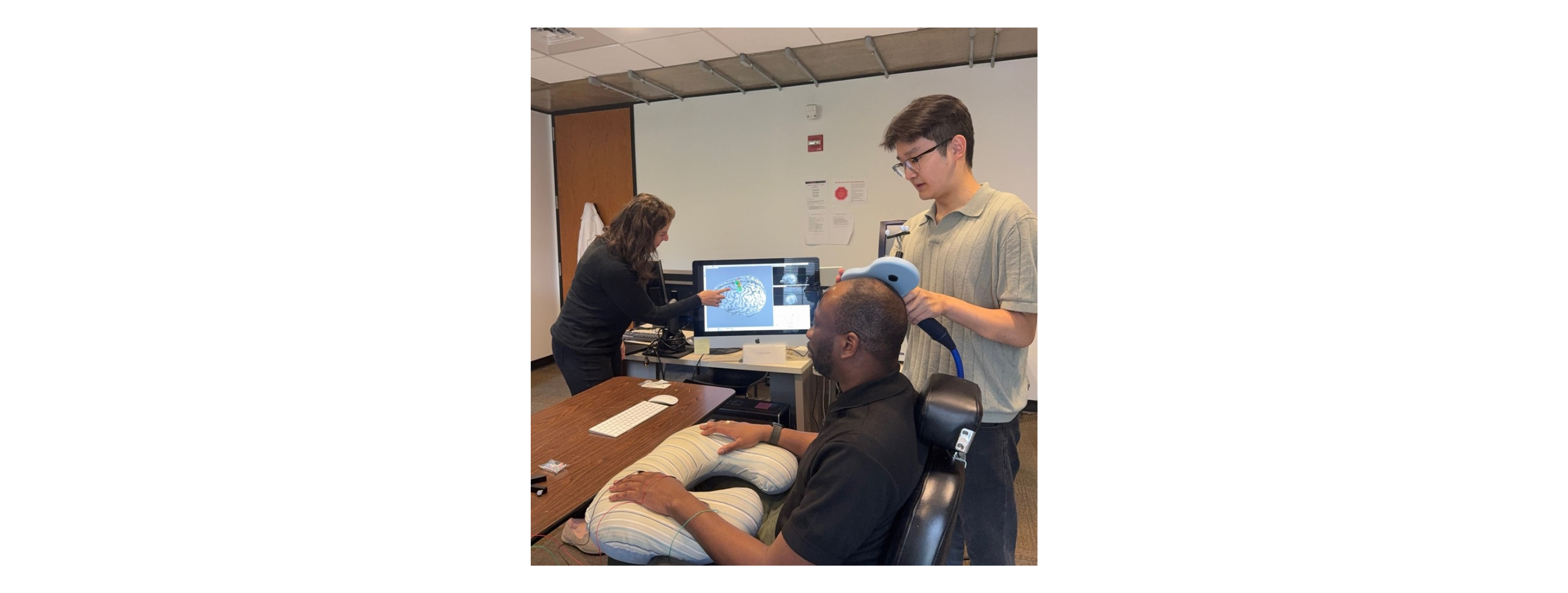
Forrest Lin (’27), a Bioengineering major, utilized transcranial magnetic stimulation (TMS) to better understand small vessel disease (SVD). Forrest was mentored by Dr. Kelly Sloane (Department of Neurology, Penn Medicine) and supported by the University Scholars program.
This summer, my research at the Laboratory for Cognition and Neural Stimulation (LCNS) focused on understanding changes caused by small vessel disease (SVD), a common age-related condition that damages the brain’s blood vessels and contributes to cognitive decline and dementia. Clinical presentation of SVD is highly variable, with some individuals showing little to no cognitive impairment and others experiencing progressive decline to dementia. Although SVD is prevalent, there is a lack of reliable biomarkers to identify which individuals are most at risk for future cognitive impairment. My project explored whether transcranial magnetic stimulation (TMS) could help identify patients most likely to suffer from SVD’s negative impacts.
TMS is a noninvasive brain stimulation technique that uses magnetic fields to stimulate regions of the brain, allowing scientists to measure neuroplasticity, the brain’s capacity to reorganize itself after an injury. Individuals with greater neuroplasticity may better compensate for SVD-related damage, while those with reduced plasticity may be more vulnerable to cognitive decline. Using TMS, we stimulated the motor cortex to create muscle twitches in the hand and consequently recorded baseline motor-evoked potentials (a quantitative measurement of the twitch) using an electromyogram (EMG). We then applied a protocol of repetitive TMS known to induce long-term potentiation (LTP)-like plasticity and compared motor-evoked potentials before and after the protocol stimulation to assess an individual's ability to adapt to neuroplastic changes. Depending on the type of protocol, TMS can serve as both a tool to assess neuroplastic change and as a therapeutic intervention to enhance brain activity. Preliminary data from five participants with SVD deemed cognitively normal at baseline visit revealed robust increases in excitability consistent with enhanced plasticity. Ongoing recruitment of cognitively impaired participants will allow us to evaluate whether reduced plasticity, as measured by TMS, is indeed a marker of early cognitive vulnerability.
Through this experience, I learned how to administer TMS and gained a greater understanding of how each component (the magnetic coil, stimulator, computer interface, and EMG) contributes to stimulation and measurement of motor-evoked potentials. I’ve measured muscle activity using EMG in previous coursework, but applying it to research has been an exciting step forward in my professional development. I look forward to becoming more familiar with various applications of TMS, especially through other imaging techniques such as functional magnetic resonance imaging (fMRI) and electroencephalography (EEG).

Above: Forrest performing TMS on LCNS director, Olu Faseyitan, while mentor Kelly Sloane reviews MRI scans to optimize coil placement.
While there were many technical aspects of my research, the transferrable skills I developed throughout the summer were just as meaningful. Working alongside research participants taught me how to build patient rapport and how important it is to be adaptable in unexpected moments. I also learned how to effectively collaborate in a team of people with vastly different skill sets and experiences, from attending physicians to other undergrads like me. Finally, I became more confident in managing my own schedule and creating deadlines to hold myself accountable.
My mentor, Dr. Kelly Sloane, played a central role in shaping my summer experience. We met weekly to discuss progress and plan next steps. At the same time, I also stayed connected with my UScholar peers by joining monthly hangouts. These conversations were a warm reminder that others shared the same challenges, whether it be living in Philly alone over the summer or navigating a relatively new field of work. The most rewarding part of these connections was building strong friendships that went beyond lab work.
This experience helped me refine my academic career. My project made clear which courses within my major were most appealing to me, and I am excited to take classes that involve developing medical devices to solve challenges related to neurology. More broadly, this summer has prepared me for graduate school by showing me what it takes to balance independent research with other responsibilities. Being a part of UScholars has given me the confidence to express my ideas and openly share my passion for research, something I know will carry forward into both my academic and professional journey.
Interested in learning more about University Scholars? View other UScholars research experiences on our Student News page!